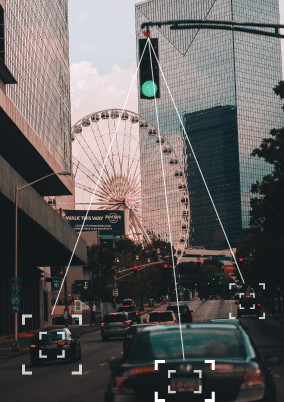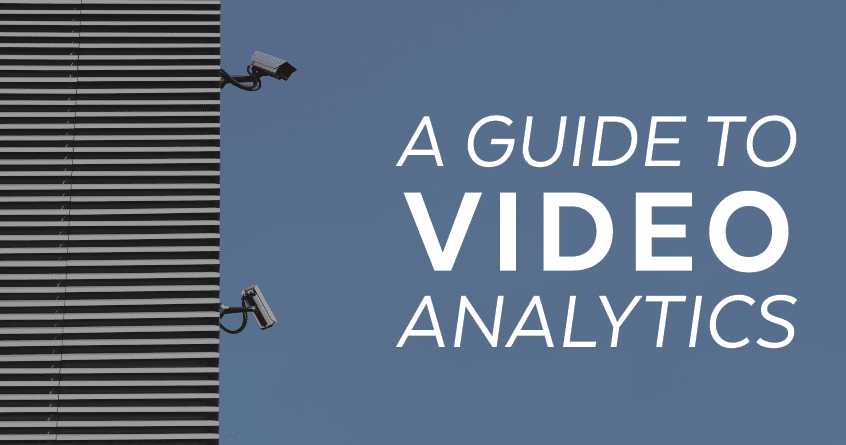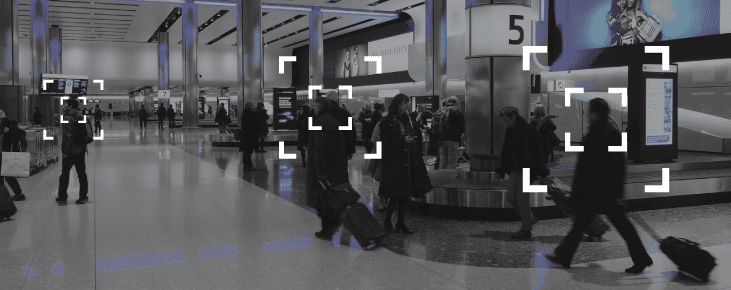Businesses of all sizes and stripes generate tons of video content every day. And recently, it has become clear that this data can be a valuable asset. The use of video analytics can help a company extract the most useful data from the vast pool of video content gathered. This beneficial information can be used to track the parameters of a building or campus or notify of violations. In addition, video analytics can reduce human error when dealing with a plethora of actions and objects.
Industries like transportation, retail, and healthcare are experiencing a significant increase in video analytics technology applications such as intrusion detection, license plate recognition, crowd management, etc. In fact, a recent study valued the global video analytics market at USD 1528.1 million (1.53 billion) in 2020 and has forecasted the value to reach USD 4142.7 million (4.14 billion) by 2026, which is a CAGR of 25.5 percent.
This article discusses video analytics, its standard functions, and its applications.
What is video analytics?
Video analytics technology processes digital video signals to perform security-related functions. Generally, there are three types of video analytics:
1) Fixed Algorithm Analytics
This first type of video analytics aims to determine if a suspicious behavior happens within the field of view of a video surveillance camera and to notify the operator of its finding. Fixed algorithm look for behaviors such as:
- Crossing a line
- Moving down a corridor in the wrong direction
- Leaving an article behind
- Leaving with an article
- Loitering
2) Artificial Intelligence Learning Algorithms
While fixed algorithm analytics look for specific behaviors, artificial intelligence learning algorithms work quite differently. When first installed, they are a blank slate. After being connected to a security camera, they begin a learning period of several weeks. During this learning process, the system discovers what types of activity are typical during the day, the night, and weekends—after which the system begins to set off alerts on behavior it has not seen before or is not consistent with what it has learned is normal. This type of video analytics takes longer to become fully operational; however, it does have its advantages. In his book entitled Effective Physical Security, Thomas L. Norman tells us:
In one early installation at a major international airport that was intended to spot children climbing on a baggage carousel, the system alerted on a man who picked up a small bag from the carousel and placed it inside an empty larger bag. The man was intercepted and interrogated only to discover that the luggage inside his did not belong to him and that he was part of a ring who came to the airport regularly to steal baggage in this way. The airport had no idea this was even occurring, so there was no way they could have purchased a fixed behavior algorithm for this, even if such existed (which it did not). This approach to video analytics is most useful.
3) Facial Recognition Systems
Facial recognition systems look for facial features. They match various points on a face with samples stored in a database. Should the system not have a match on record for the face it sees, it tries to create a new record with the best image available.
Video Analytics Use Cases
Healthcare
Healthcare facilities must ensure a high level of safety for patients, staff, and visitors. However, video analytics can help achieve business goals in addition to surveillance. For example, video analytics can alert staff if a patient has been left unchecked for too long—or analysis of patient and visitor traffic can help shorten waiting times and ensure clear access to emergency exits. Other uses of video analytics in a healthcare setting are:
- At-home monitoring of the elderly: A system can be set up to alert in real-time if a person falls—or can even monitor them taking their medication.
- Mental healthcare: Video analytic systems can analyze facial expressions, body posture, and even a patient’s gaze, thus aiding staff in patient evaluation.
Transportation (Smart Cities)
Video analytics has significantly assisted in the development of smart cities. It plays a key role in:
- Monitoring traffic: Traffic jams can be eased by adjusting and controlling traffic flow.
- Detecting dangerous situations: Video analytics provides real-time information regarding incidents such as a car stopped on the highway, someone driving in the wrong direction, erratic driving, or traffic accidents themselves.
- Providing evidence: In case of an accident, video analytics is a great help in collecting evidence for litigation.
- Vehicle counting: Video analytics generates statistics that can provide valuable insights about traffic. In addition, license plate recognition identifies vehicles that commit infractions, have been stolen, or have been involved in a crime.
Retail
Retailers use artificial intelligence learning algorithms, in particular, to help them understand who their customers are and how they behave in their stores. These state-of-the-art algorithms recognize faces and key characteristics such as gender and age. They also track a customer’s journey through the store and can detect the direction of their gaze and how long they look at a product.
Retailers gain all sorts of data that can help them enhance a customer’s shopping experience. Analytics of this type include:
- The number of customers in the store at any given time
- Customer’s characteristics
- Duration of visit
- Walking patterns
In addition, video analytics is an excellent solution for developing anti-theft strategies (E.g., facial recognition can identify known shoplifters, etc.).
Security
Video surveillance has long been an established practice for businesses in general. However, it has come a long way since the days when surveillance was monitored exclusively by people. State-of-the-art video analytics provides:
- Facial recognition: Used to identify bad actors
- License plate recognition: Used to identify vehicles involved with crime
- Suspect search capabilities: Can be deployed in real-time or stored for use later
- Grant access: Recognition of and access grant to only authorized persons
- Crowd Management: Crowd count and alerts for people moving in the wrong direction or unpermitted areas (for shopping malls, hospitals, stadiums, airports, etc.).
- Fire detection
Conclusion
Video analytics is an invaluable technology for businesses and public organizations alike. It offers processes that are effective, less tedious for humans, and more cost-effective for companies. In addition, the functionality provided by intelligent video analytics grows every day and will be a significant factor in the future.
Versa Technology, Inc. delivers last-mile networking solutions to a global community of IT professionals. We invite you to visit our website.


